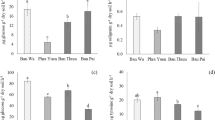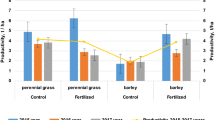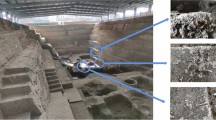Abstract
THE marked root destruction that affects the crop of rice fields of limeless meadow clay and limeless alkaline soil is well known. The damage can be attributed mainly to the toxic effect of hydrogen sulphide and other products of anaerobic fermentation processes1 (for example, butyric acid). Protein decomposition and sulphate reduction produce hydrogen sulphide2. The root-rot is much increased in horizontal roots produced chiefly by nitrogen excess, anaerobic conditions or soil defects. The roots just beneath the soil are fully exposed to the toxic products of the soil-biological processes below the surface.
This is a preview of subscription content, access via your institution
Access options
Subscribe to this journal
Receive 51 print issues and online access
$199.00 per year
only $3.90 per issue
Buy this article
- Purchase on Springer Link
- Instant access to full article PDF
Prices may be subject to local taxes which are calculated during checkout
Similar content being viewed by others
References
Mitsui, S., Aso, S., and Kumazawa, K., Trans. Fifth Intern. Congr. Soil Sci., 2, 364 (1954). Vámos, R., Acta Biol. Univ. Szeged., 1, 113 (1955).
Grist, D. H., “Rice” (London, 1955). Takai, J., Koyama, T., and Kamura, T., Soil and Plant Food, 2, 2, 63 (1956).
Füleky, Gy., Nagymihály, F., et al., Agrokém. Kut. Int. Évk., 59 (1952).
Author information
Authors and Affiliations
Rights and permissions
About this article
Cite this article
VÁMOS, R. Chemical Examination of the Water of Flooded Rice Fields. Nature 180, 1484–1485 (1957). https://doi.org/10.1038/1801484a0
Issue Date:
DOI: https://doi.org/10.1038/1801484a0
Comments
By submitting a comment you agree to abide by our Terms and Community Guidelines. If you find something abusive or that does not comply with our terms or guidelines please flag it as inappropriate.



